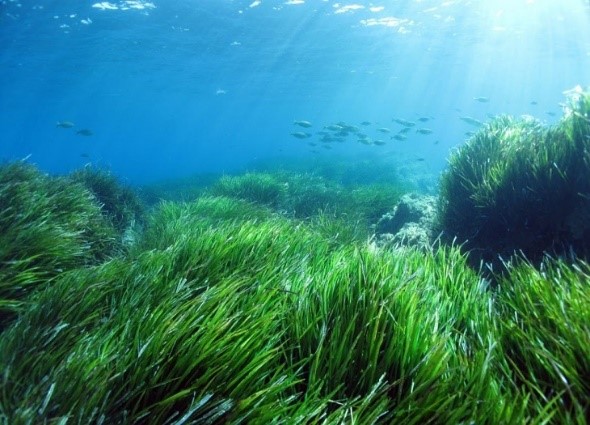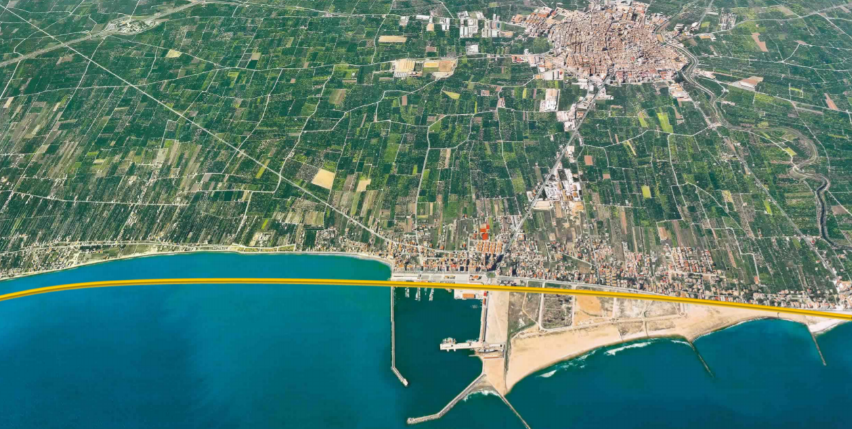When we talk about a commercial port, we think about a major infrastructure coastal to transport cargo and passenger, and which connects countries and provides economic benefits. In fact, maritime trade can be described as a development of a global economy, because National Ports System provides the 1,1% of Spanish GDP, it done the 60% of national´s exports and 85% of imports. Ports have a great importance for the foreign trade and for the global economy.
However, the construction and development of a port, generates a strong impact in sediments transportation and coastal dynamics alteration. Another important impact is a Posidonia reefs damage.
Construction of a port has perceptual affects. During construction, the water increases its turbidity and reduces its landscape quality, but this is a temporary effect. In addition, ground components of the port can reduce the visibility of the coastal line and removes intertidal area. In the cantabrian coast case, it removes the elements of the landscape, colours and textures of the coast because the water sheet varies two times on a day, moving up to 5,5 m.
One of the biggest issues with the construction of a port on the Mediterranean Sea is the Posidonia reefs damages, a marine phanerogams. This ecosystem has a great ecologically relevance, this plants are home up to 400 marine species and over a thousand animals. They provide a rich habitat and breeding ground for fish. Posidonia is an endemic and unique ecosystem in the Mediterranean Sea. This plants are like a filtration devices, they oxygenate the water and remove suspended particles. They keep the water clean and clear.
For this reason the Posidonia reefs are very important in mitigating climate change and acting as an C02 skin.
On the other hand, the accumulation on the coast, contributes to coastline protection and they also assumes calcareous skeletons to sand of the beach, keeping white sand and more attractive to the tourism.

Picture 1.- Oceanic Posidonia, Formentera
These ecosystems are seriously threated for multiple reasons which has being set as irrecoverable. It is estimated that more than 30% was lost in the 1960s. And more than 65% of the loss was caused by engineered frontage, bottom fishing, and funding. Currently practices like a bottom fishing and dredge are prohibited on areas that contain marines phanerogams.
Another great problem is coastal dynamics changes, dam constructions and breakwaters to protect the port. They can also create a blocking coastal effect. This produces sediment discharges on one side of the coast before an obstacle and erosion on the other side. This process generates progress along the coast line on the first side, and recession on another side by erosion. A visual example is Burriana’s port where we see the changes on the coast.

Picture 2.- Port of Burriana, Comunidad Valenciana.
During the construction phase, dredged materials are transported by sea currents. This affects the estuary in longer time. In use time of the port, it may be filled seabed, raising dredge more often, especially at the entrance of the port. This project involves the construction along the coastal areas which destroys dune systems that assume a reserve of sand of many beaches, causing changes in the coastal dynamics and sediment balance.
Into the port area change physical and chemical properties in the substrate of marine benthic environment continuing to affect the wildlife. Furthermore, the polluting discharges generating turbidity affecting pelagic environment damaging phytoplankton, base of aquatic food chain.
When projecting a port infrastructure the environment and its different elements in detail should be known. The dynamics coastal condition are particularly important. The coast tend to balance in the sedimentary input, generating alterations on the coast structure, even on nearby infrastructure that implies an economic spending. In the Mediterranean Sea the Posidonia reefs must be preserved in order to preserve this and important ecological ecosystem, which considered Mediterranean lungs. This ecosystem reserve is home to wide range of marine species, is unique, and it give us clearer, cleaner and whiter beaches.
Coral Lavilla Mora
